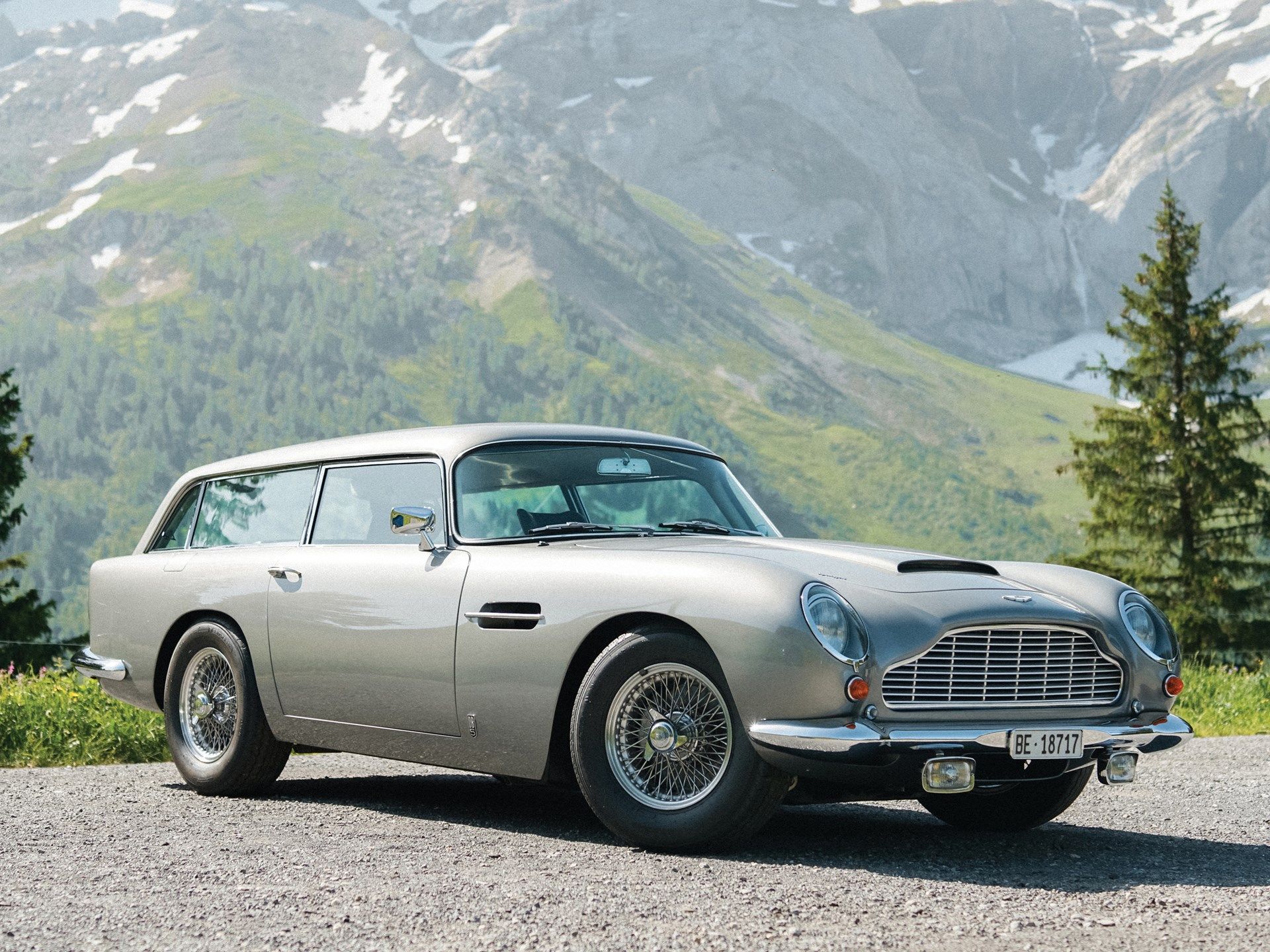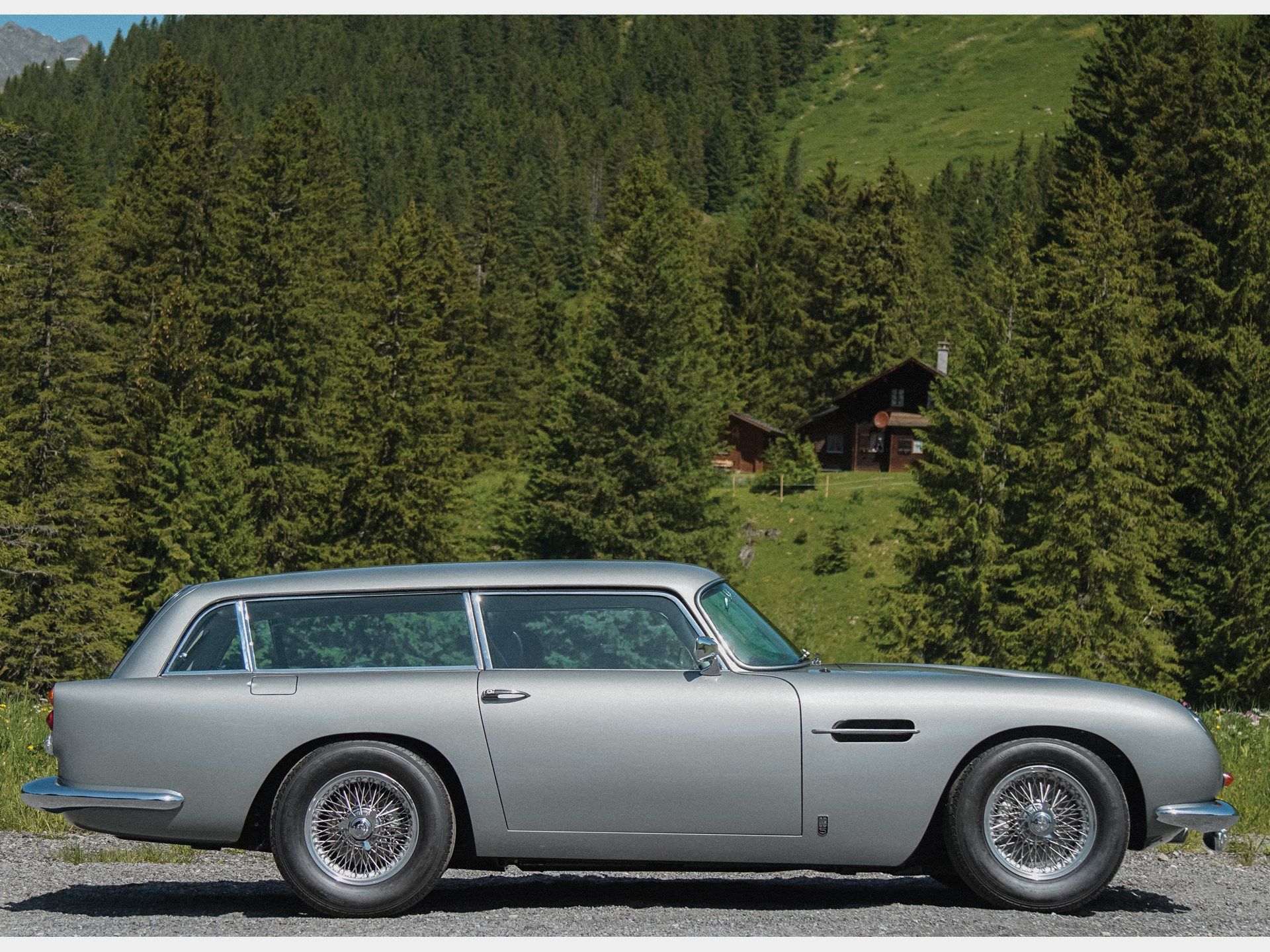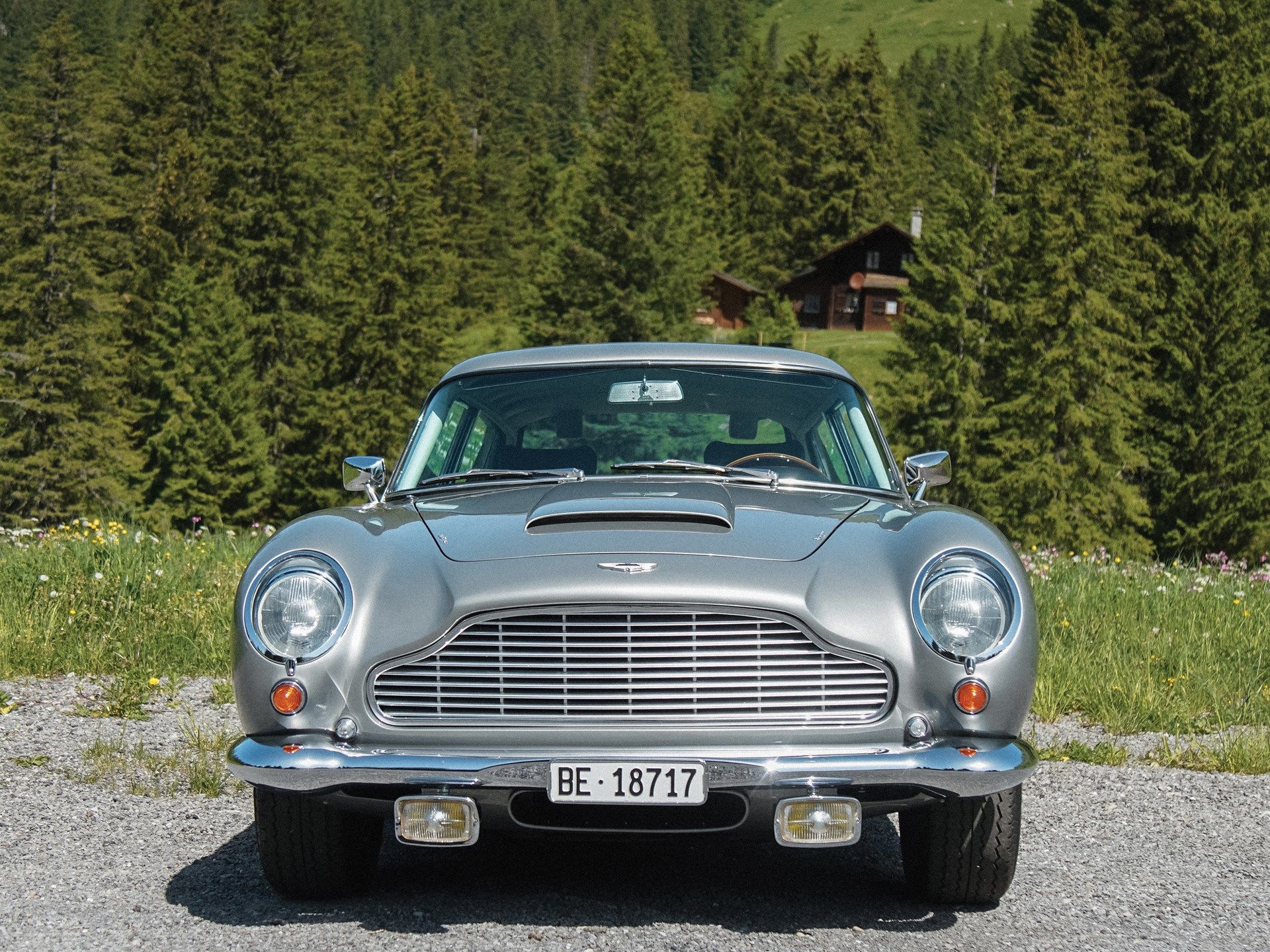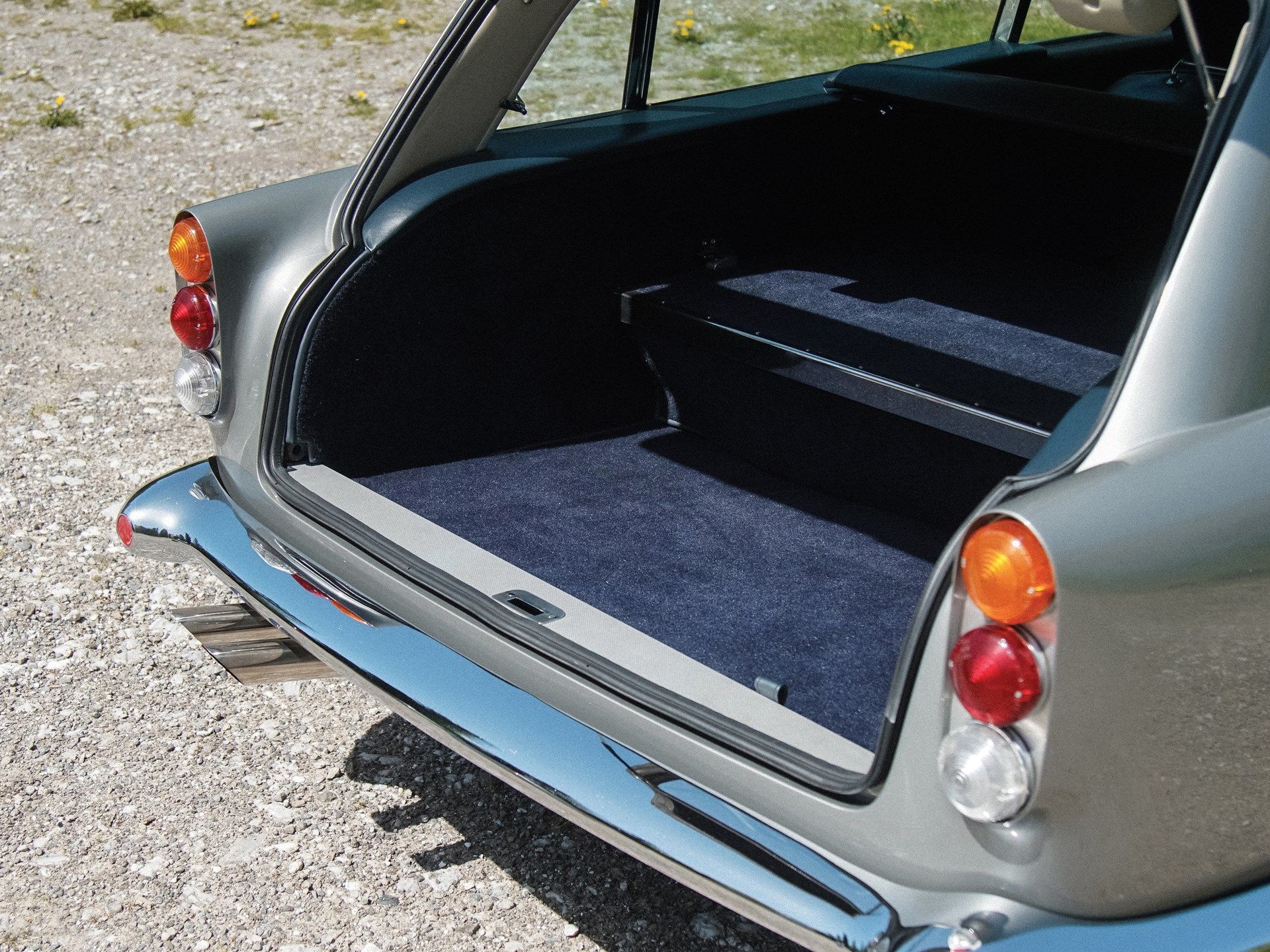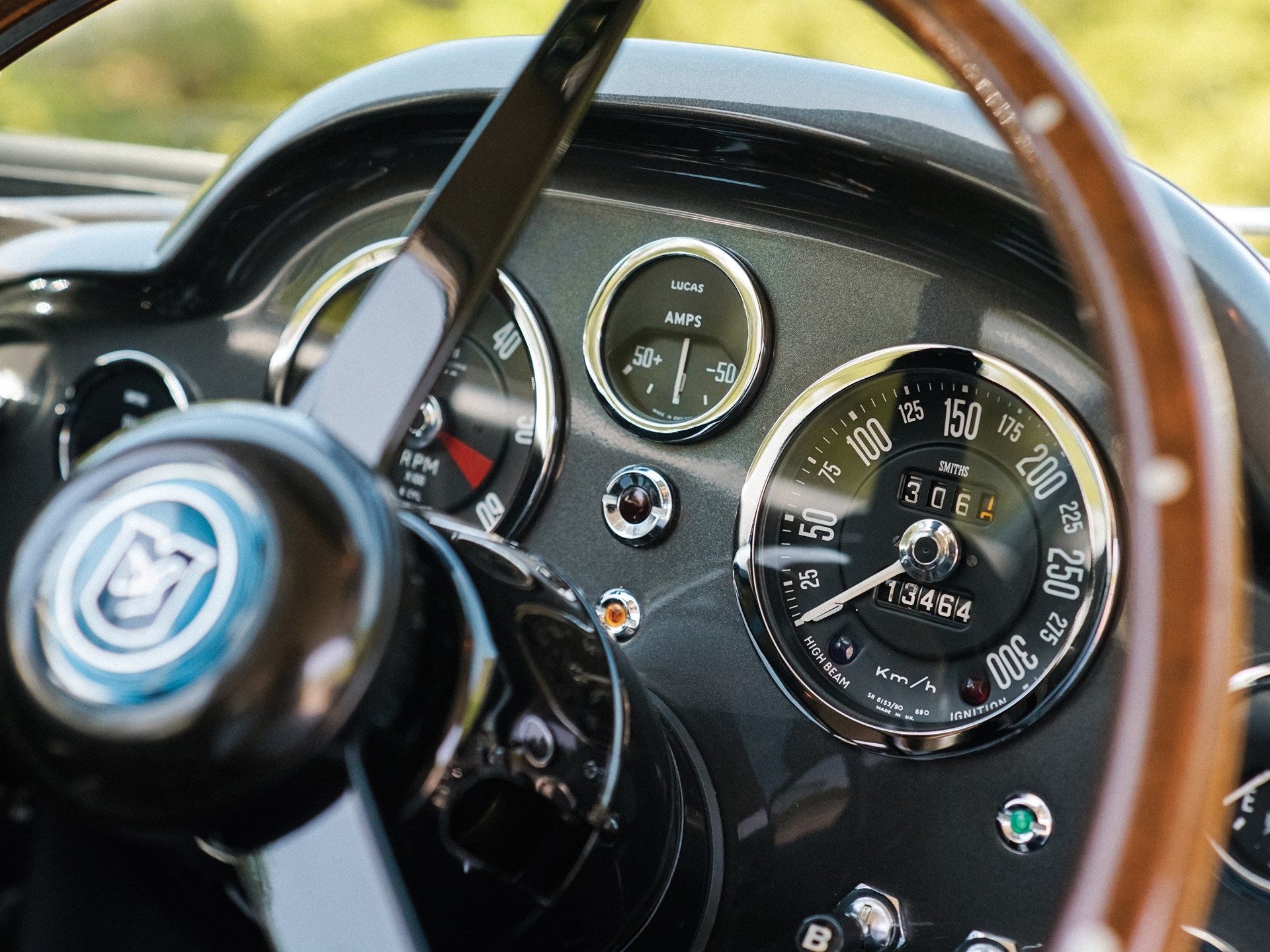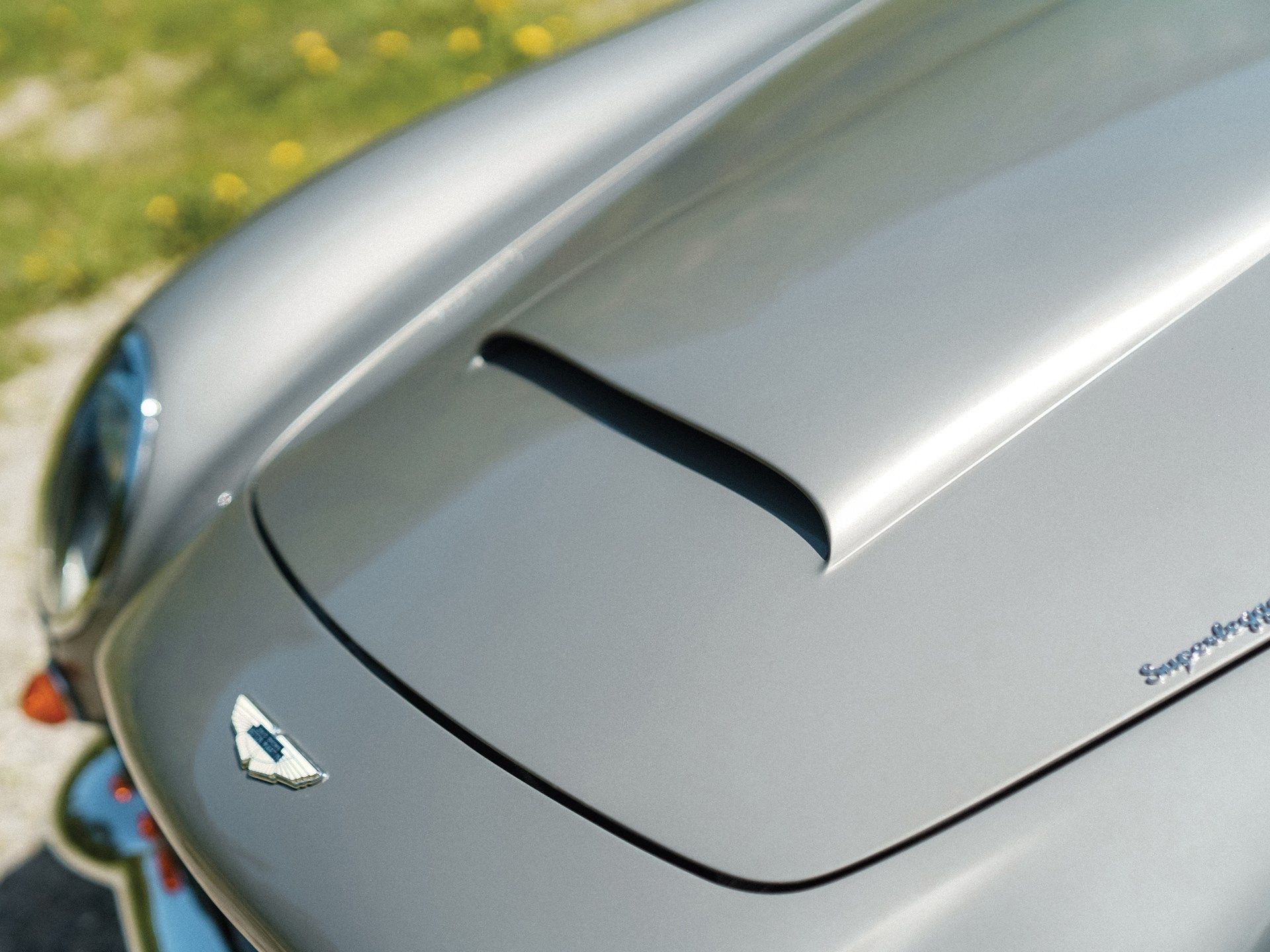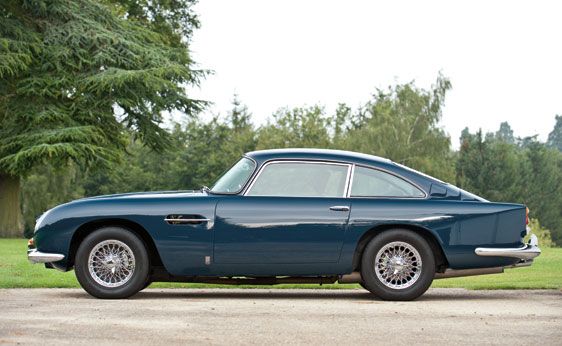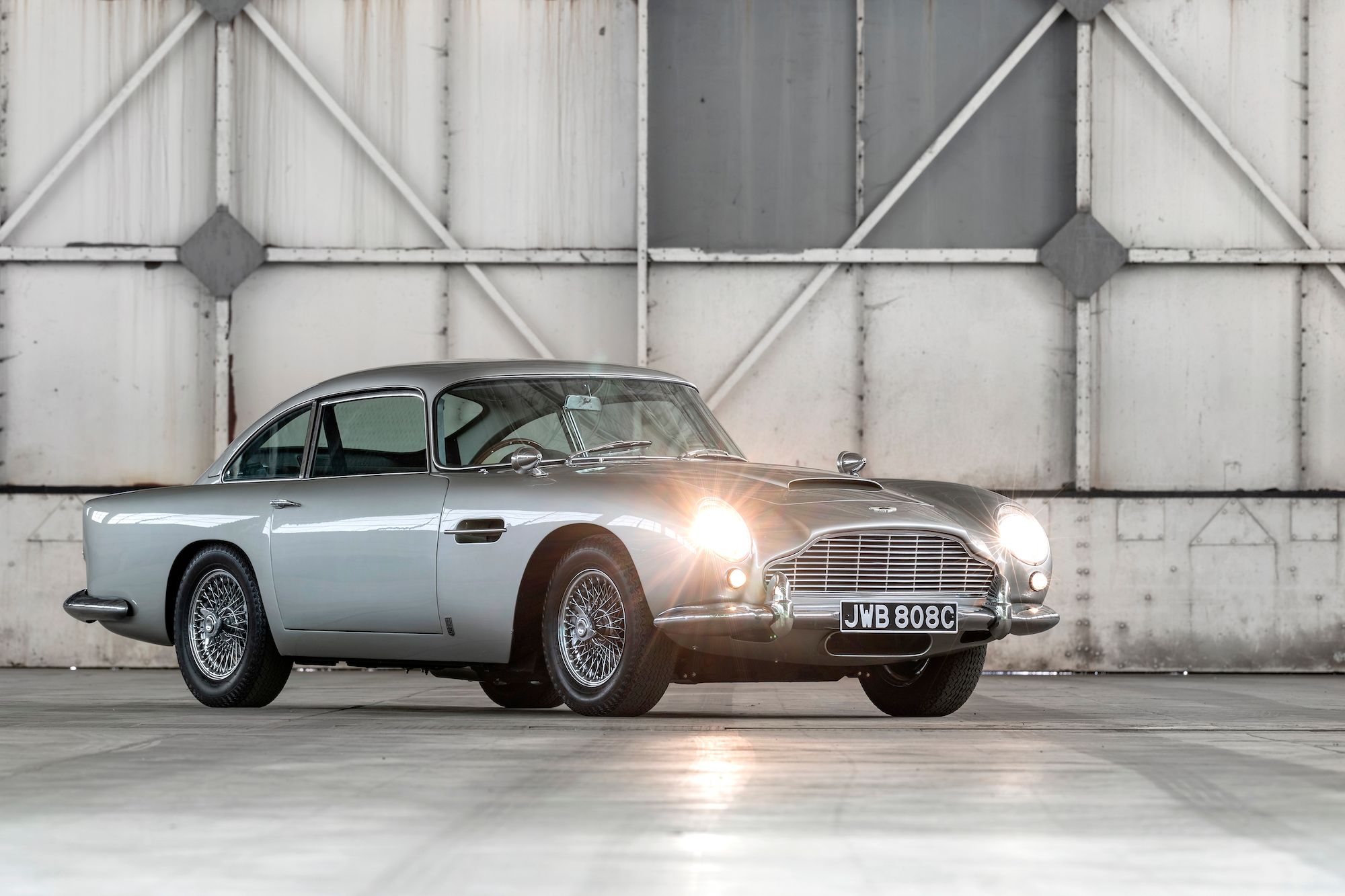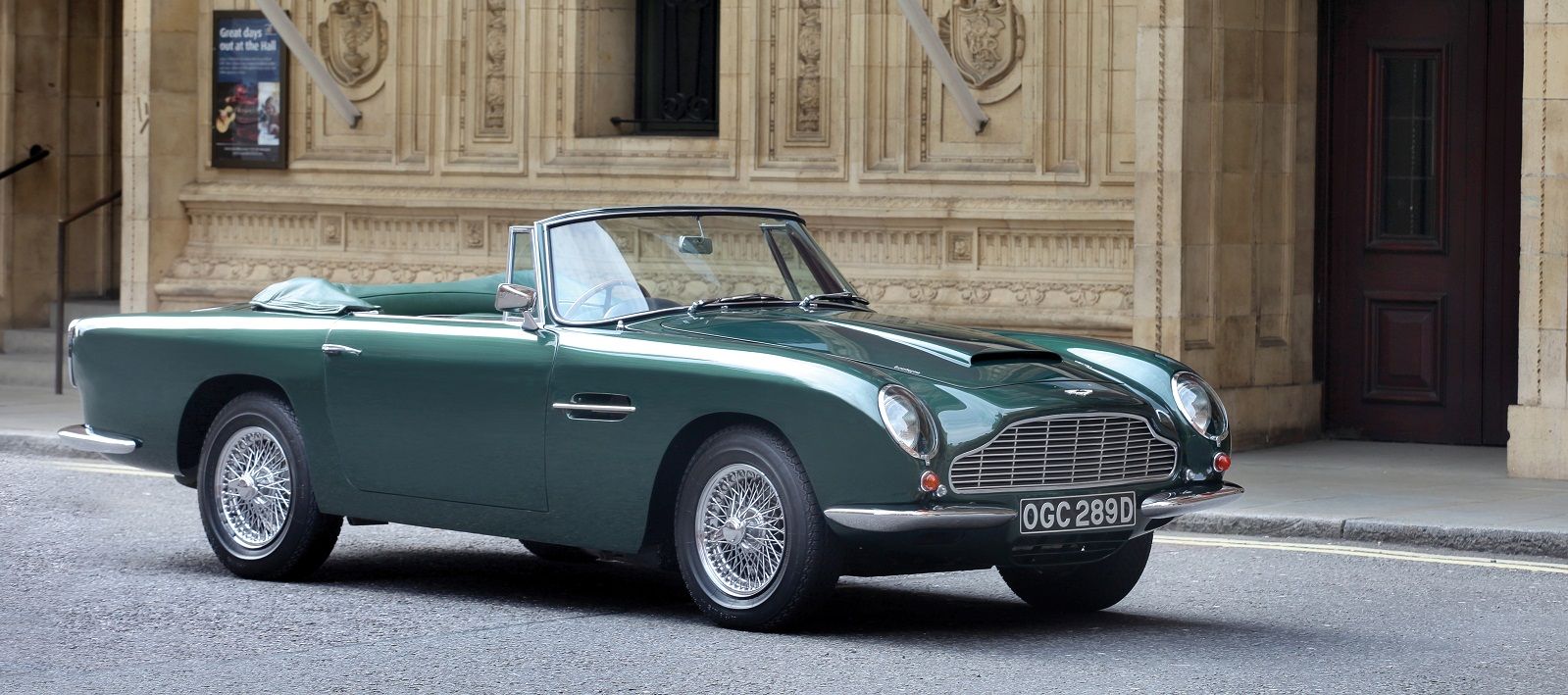The Aston Martin DB5 is one of the most famous cars in the world thanks to its role as James Bond's means of transportation in the first two James Bond movie adaptations of Ian Fleming's novels. The Silver Birch beauty with coachwork by Touring became a star thanks to its myriad of hidden weapons and clever equipment added by the Q branch. While the cars actually used during filming or during the promotion of the two films starring Sean Connery are the rarest, the ones that are the most practical are also insanely rare. These are the long-roofed 'Shooting Brake' DB5s built in period by coachbuilder Harold Radford after then-company-owner David Brown complained that the DB5 isn't practical enough and he can't take his dog with him when hunting. Only 12 were ever built and this is one of just four with the steering wheel on the left-hand side.
What's a Shooting Brake?
In the 1890s, horse-drawn carriages meant to transport groups of people engaging in hunting as a past time or, if you will, as a sport. They were known as 'shooting-brakes'. Then, after cars took over, 'shooting brake' was the term used in Britain when describing what we in the U.S. know as a station wagon. However, the name 'estate' was also in use around the same time before and after the First World War and, ultimately, the Britons favored 'estate' as the designation for long-roofed, practical family haulers.
However, the term 'shooting-brake' was unearthed and given a new lease of life in the '60s as a way to describe sports cars turned into estates. Somehow, the idea turned into a trend and riding the wave, sort of unwillingly, though, was Aston Martin with its Radford-modified DB5s that were built in 1965 in very low numbers. Later, the DB6 and the DBS received the same treatment and, as all of these cars became emblematic, Aston Martin paid tribute to them by creating a 'shooting-brake' version of the mid-'90s Vantage. The trend was so popular that even Ferraris and Lamborghinis were turned into shooting brakes by coachbuilders but, arguably, the king of '60s shooting brakes is the car you see here.
The perfect car for you and your best friend
In the '60s, before we had strict safety regulations that applied to just about any four-wheeled vehicle we see on the road, designers could really express their vision, often creating designs that were very different to what the average consumer would find in a dealership. Coachbuilders could also convert cars that came in as fixed-head coupés into luscious open-top roadsters and it wasn't unusual to see standard sedans stretched to the point they were unable to make a U-turn anywhere. But, arguably, the most tasteful transformation that was popular 50 or so years ago involved the transformation of some of the world's most expensive sports cars into two-door station wagons - or something very close to it known as 'shooting-brakes'.
Sure, some manufacturers (cue Volvo's P1800 ES or Reliant's Scimitar) offered shooting brakes right off the production line but those wanting a two-door Ferrari or Lamborghini with a long roof and a one-piece hatch in the back had to knock on the door of coachbuilders. The end result was always eye-popping and some of these builds remain one-offs with prices going through the roof when one of them hits the auction block - such as the ex-Jay Kay 1965 Ferrari 330 GT Shooting Brake.
David Brown, the man who bought Aston Martin in 1947, liked coupés and convertibles quite a bit. This is evidenced by the fact that Aston Martin's first prototype, the Atom, was turned from a sedan into a convertible at Brown's request and ultimately morphed into the first modern production Aston Martin, the DB1. However, Brown also liked hunting and he had a hunting dog who would routinely damage the leather upholstery when on trips with the cars. To make matters worse, the trunk of the DB5 couldn't fit Brown's polo bags.
|
|
ids=855451,855452> |
The situation prompted Brown to storm a board meeting of the engineering department, with his dog under his arm, and demand that the engineers conceive a DB5 which would be spacious enough to cater to his needs. Sure enough, the engineers couldn't say no to their boss and got to work. The plan was, on paper, quite simple: extend the roof all the way to the tip of the chromed rear bumpers, have it come straight down with a one-piece hatch complete with a rear window, add some rectangular windows aft of the doors to increase the glassed area for visibility's sake and modify the cargo area so that Brown's dog could sit in there comfortably during hunting trips.
However, actually doing the conversion meant chopping the car up quite a bit and, actually, the work wasn't carried out by Aston Martin's own people at Newport Pagnell, but by Harold Radford's men and women at his coachbuilding firm. They'd take in an Aston Martin DB5 FHC and start working from the windscreen back. They'd cut the roof structure of the Superleggera chassis, extend it using steel tubing and cross members and then reinforce it in the back where the hinges for the hatch were attached. The hatch didn't quite come in line with the taillights that still protruded rearwards more, like on the coupe, although the narrow physique of the back section of the car was obviously gone. The rear light clusters were left intact - although DB6 units were installed to customer cars as opposed to the DB5 ones that were mounted on Brown's personal Shooting Brake, but the rear bumper received two extra hazard lights incorporated in the corners of the bumper.
|
|
ids=855453,855454> |
In the front, the Aston Martin DB5 Shooting Brake looks just like any other Aston Martin. It features the typical Aston Martin grille with the egg-crate mesh bordered by the chromed frame and the headlights, perched on the rounded and protruding front fenders, are untouched as well. The indicators are placed just under the headlights while there are two other, small, white lights placed next to the grille in its lower corners as well as two fog lights hanging from the bumper on either side of the main lower inlet opening.
From its side, the Shooting Brake really loos imposing with that long roof that ends with a slightly angled rear hatch. There are large side windows with angled frames and there's also a rear quarter panel window just before the thick C-pillar. While it's ostensibly far from the typically elegant line of a DB5 Coupe, the Shooting Brake remains elegant - but in its own unique and special way.
This particular DB5, chassis #DB5/2273/L, was ordered from new in Shooting Brake specification by a Swiss gentleman by the name of Reiner Heumann. He used it as his daily driver for the entirety of his life which means this isn't one of those DB5s with precious few miles on the odometer as Mr. Heumann passed away three decades after taking possession of the DB5.
Upon his passing, this special DB5 with its optional headrest for the passenger's bucket seat, belts for both front seats, and a power-operated radio antenna was kept by the family for five years before being sold off in 2003 to another Swiss gentleman who had it restored by Aston Engineering. The company switched the original DB6 taillights for DB5 ones, dumped the original three-speed Borg-Warner DG automatic transmission for a five-speed manual of ZF origin and, to top everything off, the original, all-aluminum 4.0-liter DOHC straight-six was upgraded to Aston Engineering's 4.2-liter specification. In standard form, Radford still claimed that the DB5 Shooting Brake could hit the FHC's top speed of 150 mph and stop from 100 mph in just six seconds.
With the 4.2-liter engine, then, it could go even quicker. And all that in a car with 40 cubic feet of space in the back that cost more than twice the price of the average British house in 1965 (a new Aston Martin DB5 cost £4,412 to which the shooting brake conversion added a further £2,000, according to Bonhams). That means this car cost new over $162,000 (adjusted for inflation and converted from British pounds) - that's over $10,000 more than the price of a brand-new Aston Martin Vantage.
Aston Martin DB5 Specs
|
Engine |
inline-six |
|
Displacement |
4 liters |
|
Output |
282 hp @ 5,500 rpm |
|
Torque |
288 lb-ft @ 3,850 rpm |
|
Gearbox |
5-speed manual |
|
0-60 mph |
8 s |
|
Top speed |
143 mph |
Six years down the road, in 2009, the DB5 was sold again and ended up in the ownership of its current custodian. He also had it refreshed, this time at R.S. Williams, who overhauled the engine, bringing it up to 4.7-liters and fitting it with triple SU HD8 carburetors as it had had in period. The suspension was upgraded to cope with the extra oomph, R.S. Williams fitting their own springs and dampers, all hiding behind 15-inch multi-spoke rims. The car also received a respray and it was brought back to its original tint of Silver Birch - the same as on Bond's DB5s - after living its life painted in Cumberland Grey and Grigio Quartz.
This is how the car is presented today, a DB5 with over 300 horsepower under the hood (in original, 4.0-liter trim it put out some 282 horsepower), a hatch, and the wheel on the left-hand side. Only three other LHD DB5 Shooting Brakes were built by Harold Radford in 1965 and this is surely the one that's traveled the most. RM/Sotheby's expects it to sell for anywhere between $1 million and $1.4 million and we see no reason why it shouldn't. In fact, we think that's actually a bit on the conservative side as Bonhams hopes to get about the same ($1-1.3 million) for a standard FHC DB5 made in 1965. This is certainly rarer than that model and it should, thus, command a higher price - also because it's pet-friendly!
Further reading
Video Showing Gadgets on the James Bond DB5

